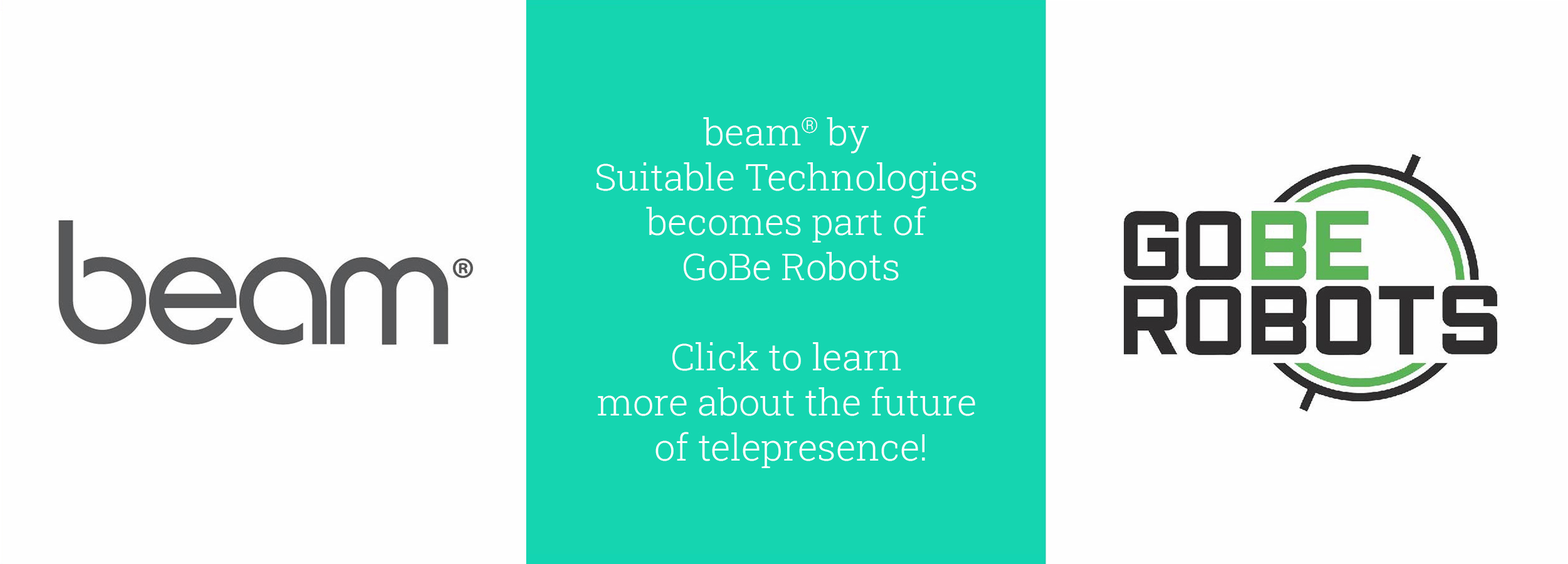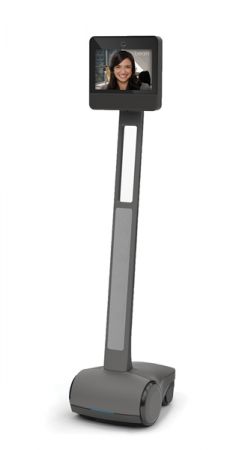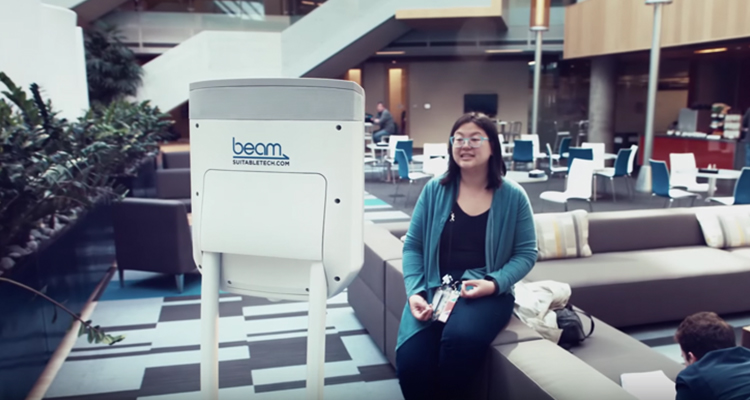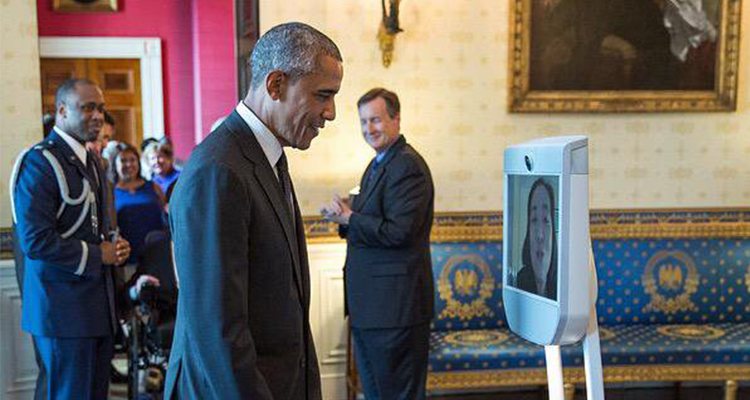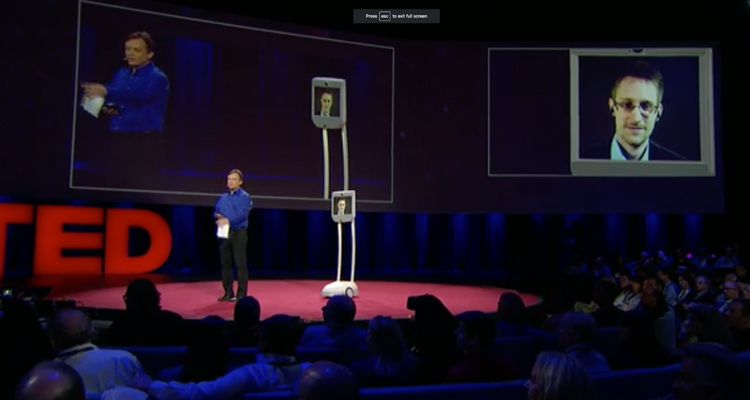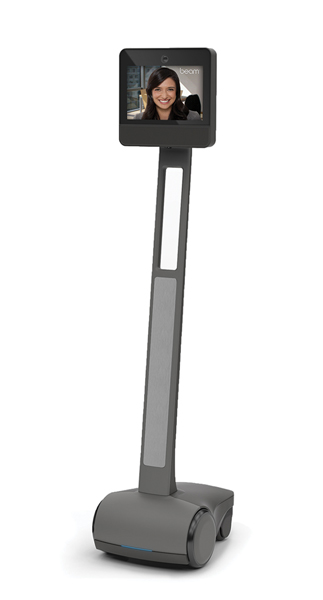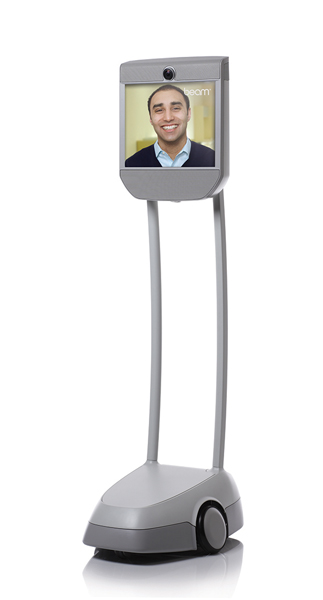Dr. Jennifer Rode is a Senior Lecturer in Digital Technologies in Education at the University College London (UCL), and she has a unique perspective on telepresence technology. To manage life with a degenerative autoimmune disease, Dr. Rode uses Beam to physically be in two places at once, be it at work, attending international conferences or otherwise interacting with others in the world at large. Her research is in the areas of Human-Computer Interaction and Ubiquitous Computing, and she recently published a thoughtful, in-depth academic paper entitled, “On Becoming A Cyborg: A Reflection On Articulation Work, Embodiment, Agency and Ableism.” We caught up with Dr. Rode to find out more about what she means when she refers to herself as “cyborg,” how Beam allows her to to socially construct a different experience of her disability, and where her research will take her next.
Q: You’ve been using Beam telepresence since 2014 when you first used it to remotely attend Ubicomp Conference in Seattle. How did you find out about Beam, and what led to you using it to attend this particular conference.
A: I’ve been attending Ubicomp for 10 years. In 2014 my colleague, Carman Neustaedter, had Beams there, and I volunteered to participate remotely via telepresence. It was a great experience so shortly thereafter, I bought my own Beam to place in my lab using funds generously provided by the American National Science Foundation.
Q: You’ve written an article about your experiences, and in the title you call yourself a “cyborg.” What do you mean by that, and how does it relate to both your area of expertise?
A: I'm making reference to Donna Haraway, who argues we’re always cyborgs. She talks about how there’s not a clear dynamic between computers and animals, humans and technology. The theory of my paper is in that spirit; just as there are no clear divisions between human and animal, there are no clear divisions between able and disabled. It’s all a social construction.
Q: How does this apply to your personal experience as someone with a degenerative autoimmune disease who uses telepresence technology?
A: Disabilities aren't all static and I elect to use canes sometimes at conferences or I’ll rent a scooter - by selecting what technologies you're going to use, you choose how you present your identify to the world. My disability often appears invisible, and some days are worse than others. I use a cane, and sometimes at conferences, a scooter. By selecting what technology I use to work with my disability, I choose how I’m represented -- each has different benefits and drawbacks. What a telepresence robot allows is a lot of physical stamina; you’re as strong as long your battery lasts, which can be eight hours at a go. I can move faster and see eye to eye, too.
People with disabilities already struggle with visibility and presence, so that’s a new form of vulnerability that you have to take into consideration. Telepresence gives you a way to be visible and present in places you wouldn’t likely be able to do so before.
Q: What were some of the unexpected reactions you got from your initial/early uses of the Beam?
A: Often I felt like a spectacle. People always want to take selfies with the Beam. While there’s certainly an air of novelty, people with disabilities are often objectified, so we may experience that excitement differently than perhaps an able bodied person would when using telepresence.
Initially, I was also told I was being louder than I realized and ran over a lot of toes and bags, but that went away quickly, becoming a useful technology almost immediately after the first encounter with telepresence. Nowadays I have colleagues I visit frequently, so the novelty has worn off for them as well and we simply have real, productive, cozy meetings. But new visitors to the lab are invariably startled when this new machine wakes up and starts moving, so for etiquette sake, I always do a 360-degree circle to announce myself when I Beam in somewhere.
Q: You say that by becoming a cyborg, you’re making a political statement. Please tell us more about the statement you’re making.
A: I feel that it is a valid way to construct my disabled identity. In the UK there’s this notion of obligation to accommodate the disabled, and the ADA is similar in the US. I believe it’s a reasonable expectation that you provide a disabled person the option to use a telepresence robot.
Q: Where’s your favorite place you’ve ever been via Beam? Most memorable interactions with people on the other end?
A: I crashed a colleague’s birthday party once accidentally -- and it was a party I would’ve never been invited to because it was a very senior person. They had just wheeled in the cake, and it blocked my exit -- so I ended up staying, taking a selfie with the guest of honor, and joined in singing happy birthday.
Q: Any great Beam stories from your interactions both described in your article and otherwise?
A: I believe you can have physical embodiment experiences by touching and hitting things. Not really running into your colleagues -- but you can have a degree of physical interaction that’s interesting. For example, with her permission, I often nudge (sometimes a little hard!) a close friend and colleague in a playful way. It’s a way to have physical agency in the world. You have a “body,” and you can move things and affect physical change in your environment.
Q: From your experiences, would you say there’s a growing telepresence community or, at the very least, growing awareness and interest in the value of this technology in improving the quality of life for disabled people?
A: Within the ubiquitous computing community, we are starting to recognize that telepresence has great value. I’m currently trying to get a study funded looking at people with disabilities specifically, as there hasn’t been a lot of research yet in that community.
Q: Do you have any insights about the social implications of technology for our society, and in particular, those with disabilities?
A: The Gartner Hype Cycle continues to be a good predictor of how we as a society overall interact with technology. We have the same fears, concerns and excitement when adapting to any new technology. There’s a great book called The Victorian Internet that talks about the attitudes of tech adoption and the parallels between the telephone and telegraph and today’s internet -- how the hope is that technology will make society “perfect.”
And there’s a disability theory book by Tobin Siebers that states that rather than think about the medical model definition of disability as a deficit, where telepresence would make people “good enough” to be part of society, we should instead think about disability as an asset, which telepresence helps see it as such.
Q: What’s the most valuable aspect of telepresence technology to you? What are the benefits for individuals using telepresence technology as well as for society as a whole?
A: There are days I don’t feel well enough to leave my house, but I still want a physically embodied presence in the outside world. When I use Beam, I feel like I’m part of the world.

